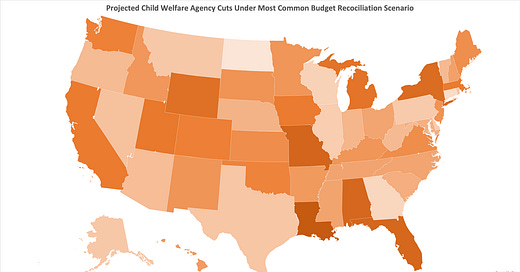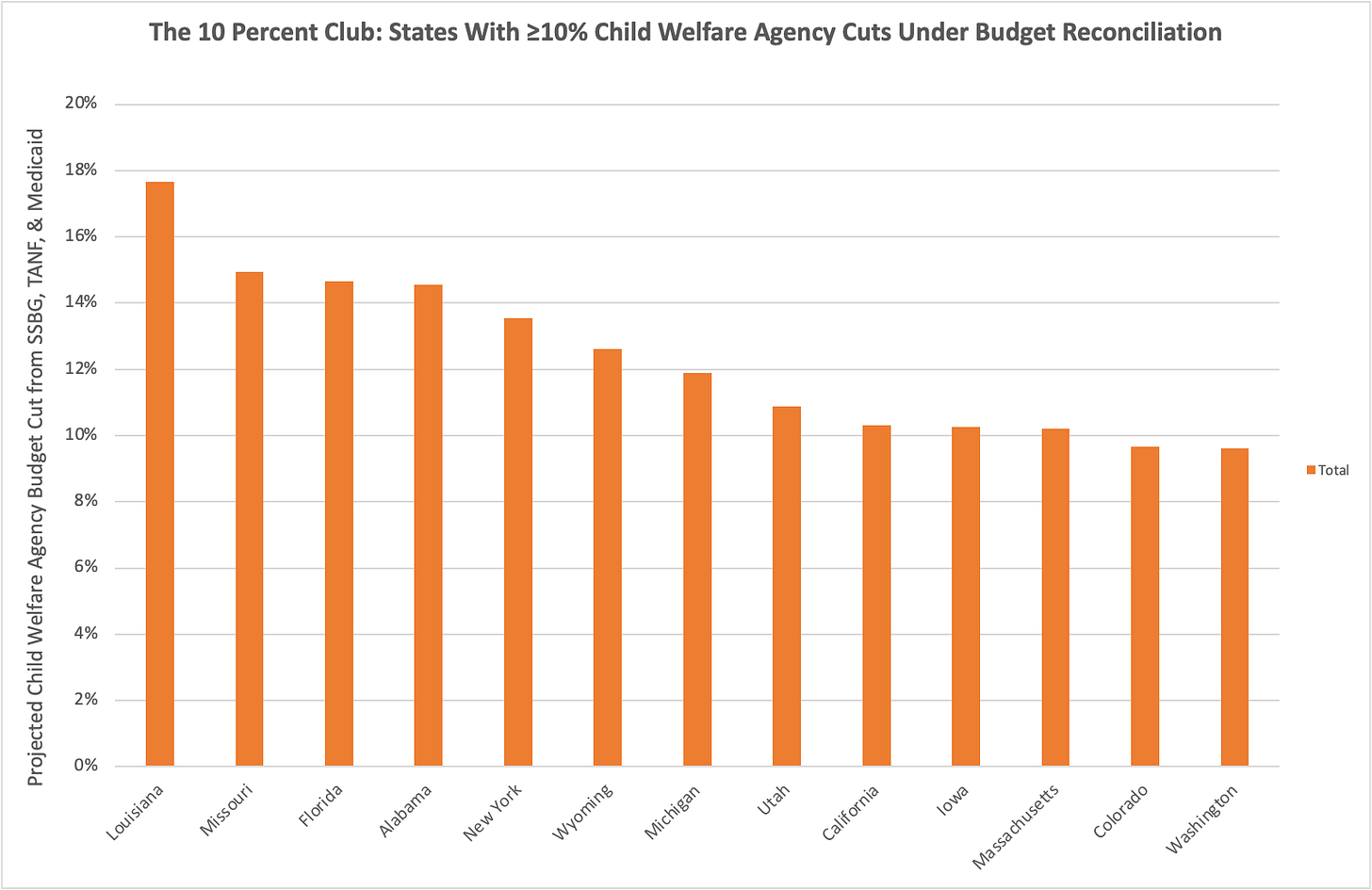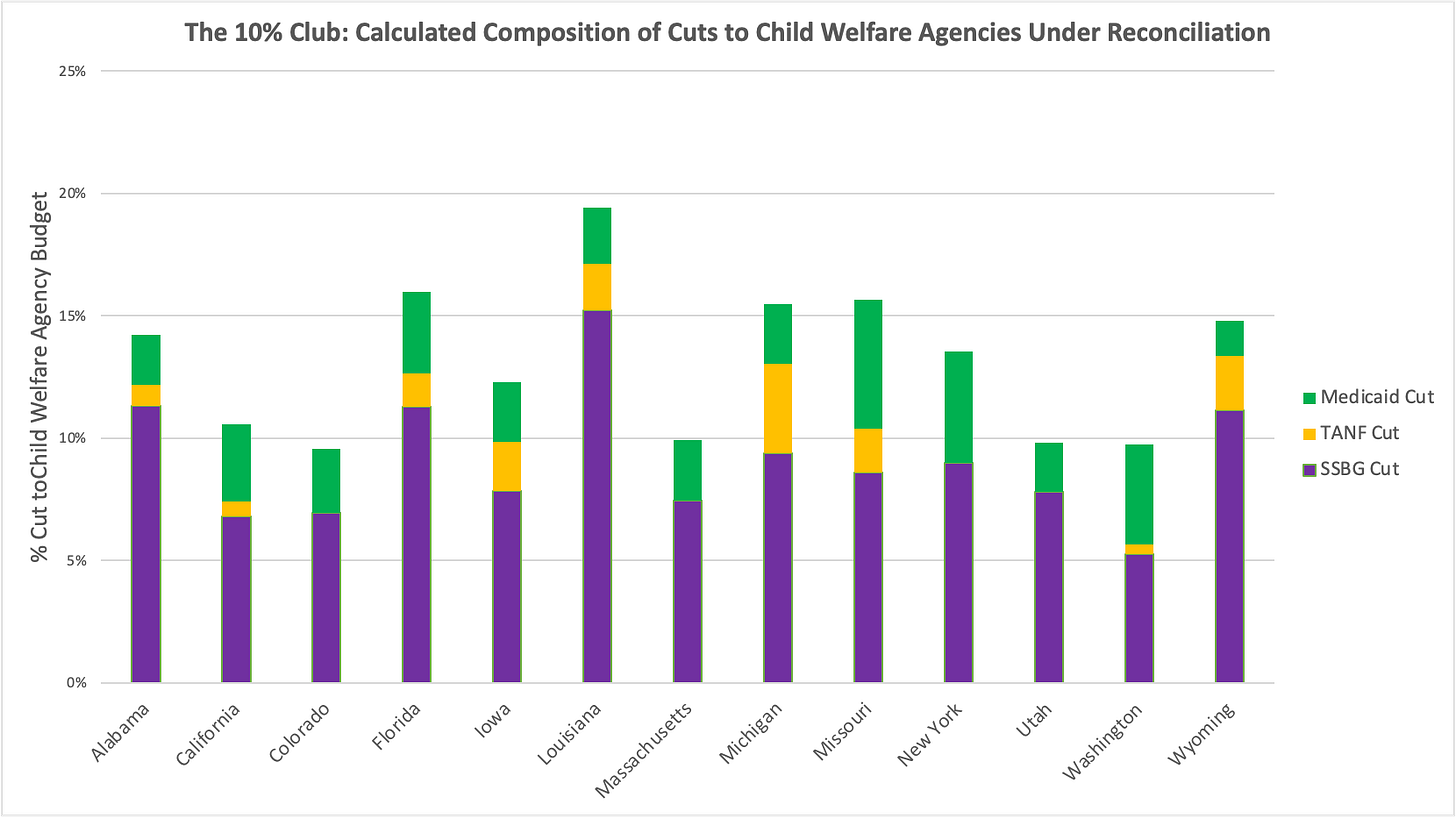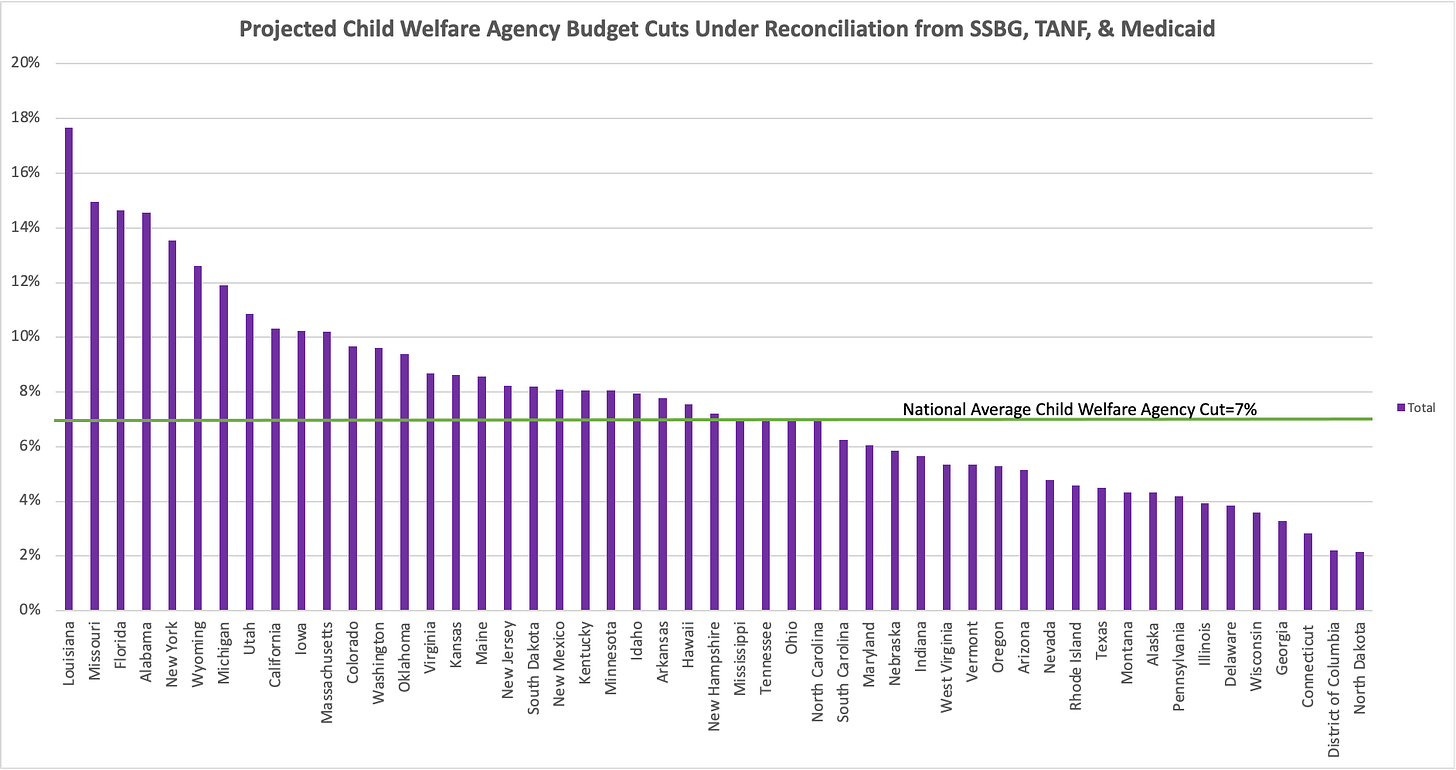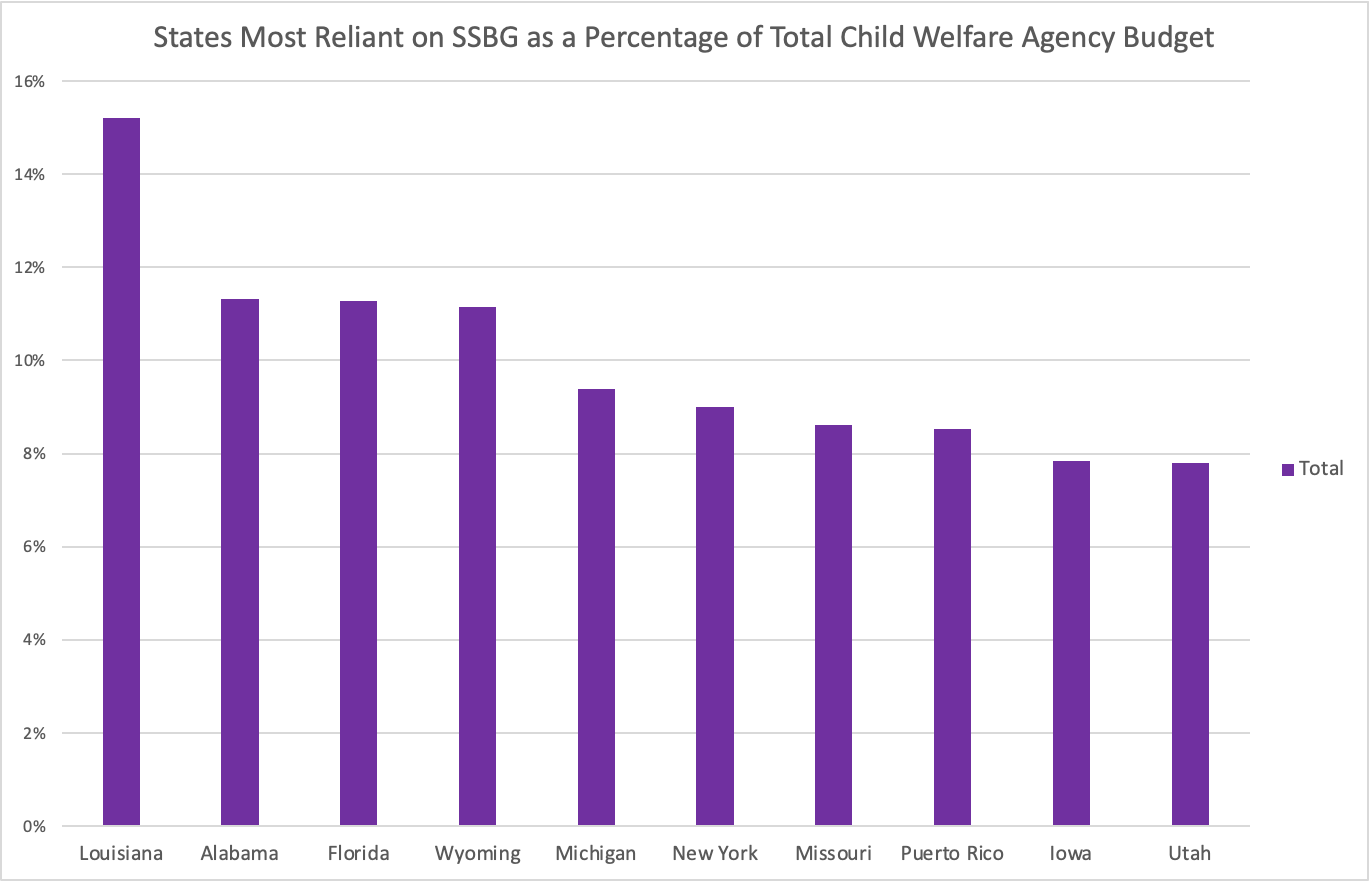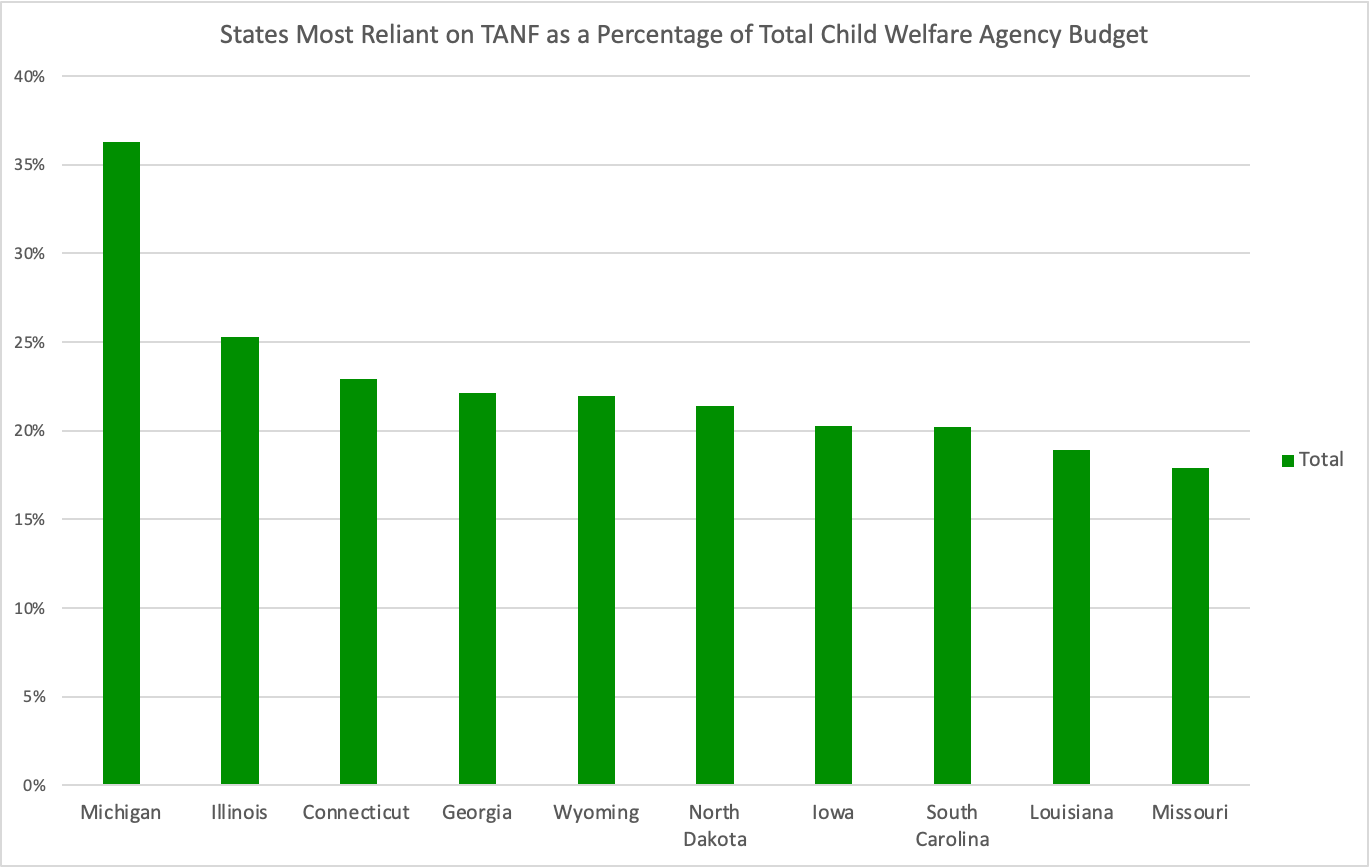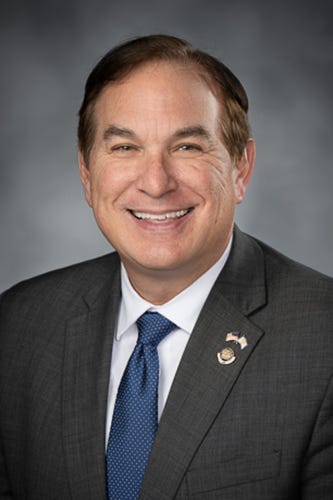Welcome, Wonks! We’ve got some exciting new analysis for you today.
This week there’s a lot happening at the U.S. Department of Health and Human Services’ (HHS) Administration for Children and Families (ACF).
Reconciliation negotiations are also continuing, with likely votes this week aimed at finalizing a combined budget resolution.
Congressional leaders for the majority have pointed to goals of approving budget resolutions this month and finishing work by Memorial Day.
The Congressional Budget Office has estimated we will breach the debt limit in August or September, which further drives the timeline for negotiations.
In light of this activity, Child Welfare Wonk is excited to share with you an original new analysis projecting how reconciliation could affect every state child welfare agency.
Analysis: Child Welfare Cuts in Recon
Congress is currently deliberating budget reconciliation legislation that could have significant implications for child welfare policy and financing.
As part of proposed spending reductions to offset tax policy changes, this simple-majority fast-track legislative procedure could create cuts to child welfare programs.
We have previously provided a primer on reconciliation and noted programs that could see significant cuts or elimination, which include:
Social Services Block Grant (SSBG);
Temporary Assistance for Needy Families (TANF); and
Medicaid.
A national perspective masks state-by-state variation. To project potential impact, Child Welfare Wonk modeled how these possible cuts could affect each state.
We built a projection model using data from three sources1, which let us make a conservative estimate of how possible reconciliation cuts would impact each state.
Here’s a rundown of what we found for you, and the details on how we did it.
What We Found: Scale of State Cuts
BLUF Takeaway:
Child welfare agency cuts would average 7% nationally.
Child welfare agency cuts would range from 2% to 18%
13 states face cuts of 10% or larger.
Source of Cuts:
This map highlights the projected cuts nationwide.
The 10 Percent Club
Of note, our analysis shows 13 states as members of the “10 Percent Club”, meaning they face child welfare agency cuts of 10% or more under this projection.
This first chart breaks down the total cut each of these states face.
To dig deeper and because states’ vulnerabilities to these cuts vary, we also broke out the components of each state’s total cut.
This chart shows the same 10 Percent Club, showing not just its total cut but also how much of it specifically comes from SSBG, TANF, and Medicaid.
Projected Cuts to All States
This chart provides the projected total child welfare agency cut to all states under current reconciliation. It also benchmarks to the national average cut.
States Disproportionately Reliant On SSBG, TANF, & Medicaid
We know that as reconciliation continues, the composition of total possible funding cuts child welfare agencies face will change.
As negotiations continue, we will keep updating this modeling. In the meantime, we also will offer insight into which states have the greatest reliance on each program.
This first chart shows the 10 states most reliant on SSBG as a percentage of their total child welfare agency budget.
If reconciliation were to not cut SSBG, these states would disproportionately benefit. If it does cut SSBG, our projections show them as the most vulnerable to that cut.
Next up is the 10 states most reliant on TANF as a percentage of their total child welfare agency budget.
If reconciliation were to not cut TANF, these states would disproportionately benefit. If it does cut TANF, our projections show them as the most vulnerable to that cut.
It’s worth noting that TANF faces further federal scrutiny that compounds this risk.2
Next up is the 10 states most reliant on Medicaid as a percentage of their total child welfare agency budget.
This one is less straightforward; it only accounts for Medicaid spending by the child welfare agency. That is a significant undercount of Medicaid’s role in child welfare.
But it’s still important, and tells us states with likely additional risk exposure to any reductions in reconciliation.
Taken together, these three charts give a glimpse of how changes in reconciliation during negotiations may change our projections. Stay tuned for more.
Key Questions This Analysis Raises
There are many things this modeling cannot project. There are also further analyses and decisions others will face that this can inform. These include:
What would the projected budget reductions in this model look like if applied to a current child welfare agency budget?
How would the impact of these cuts change based on current and future projected foster care and prevention caseloads?
How would cuts to Medicaid impact child welfare agencies’ prevention services?
How would these reductions affect on entries to and exits from foster care?
In what ways would reductions of this nature change implementation of the recent bipartisan reauthorization of Title IV-B of the Social Security Act?
Does your state have its own recent policy reforms that these cuts would impact?
Wonk Out and Go Deeper: Read the full analysis with our methods and data.
HHS Cuts Workforce, Restructures
Last week, HHS Secretary Robert F. Kennedy, Jr. announced a major HHS restructuring that will have significant child welfare implications.
What’s Happening: Designed to streamline toward efficiency, this initiative will downsize and reshape the agency that is 1/5 of federal spending.
What Will Change: Changes under this effort will include:
Reducing HHS workforce by 10,000, including 10,000 early retirements and 10,000 eliminated positions;
Consolidating 28 HHS divisions to 15;
Reducing by half the number of HHS regional offices, from 10 to 5;
Creating a new Administration for a Healthy America (AHA), consolidating an array of existing efforts, including on maternal and child health, and mental health;
Reorganizing existing research and data analysis functions, including the Assistant Secretary for Planning and Evaluation; and
Incorporating the Administration for Community Living within ACF.
ACF Staff Eliminations: March 28th brought a major round of HHS workforce reductions, including at ACF.
Key Child Welfare Impact Questions: It is still too early to know the full extent of how this will impact child welfare policy and programs. Key questions will include:
How will reorganization impact technical assistance and oversight of child welfare programs like Title IV-E, Title IV-B, SSBG, and TANF?
What will this mean for guidance on implementing the Protecting America’s Children by Strengthening Families Act (P.L. 118-258)?
How will these changes impact the Title IV-E Clearinghouse and approval of programs states and tribes can use under Family First?
How will this impact annual release of datasets like the Adoption and Foster Care Analysis and Reporting System, which is usually out by now?
Will approval of updates to state’s programmatic and cost allocation plans take longer with fewer regional offices? Which regional offices will remain?
We will continue monitoring this as implementation continues.
Noms News: Alex Adams for ACF Dir.
The News: On March 24th, President Trump nominated Alex Adams to serve as permanent Assistant Secretary for Family Support, leading ACF.
His Background: Dr. Adams is a pharmacist by training, with experience as a state budget leader. He led the Idaho Department of Health and Welfare since June 2024.
Child Welfare Focus: As director his child welfare agenda has included:
Focusing on prevention;
Partnering with state legislators to extend foster care to 23;
Allowing kin-speficic licensing;
Improving timeliness to permanency;
Growing the number of licensed family foster homes.
Who is in the Role Currently: Andrew Gradison is currently serving as Acting Assistant Secretary at ACF.
What Next: His nomination goes through the Senate Finance Committee, chaired by fellow Idahoan Chairman Mike Crapo (R-ID). The Senate must approve his nomination.
Learn More: Read this Idaho newspaper article and ID DHW bio page.
HHS GC Nom with Background Prosecuting Congregate Care Overuse
The Latest: As the Trump Administration rounds out its policy leadership team, we are also looking at other areas of child welfare policy background in key roles.
Nominee for HHS General Counsel Mike Stuart has a background prosecuting state overuse of residential mental health settings for children and youth.
Relevant Child Welfare Policy Connections: As U.S. Attorney for the Southern District of West Virginia in Trump 1.0, Stuart led an investigation into West Virginia’s children’s mental health system.
That investigation led to an agreement to address concerns West Virginia had violated the American’s with Disabilities Act by unnecessarily institutionalizing children.
The settlement required a plan to end unnecessary residential care use and provide community-based mental health services for children and youth.
What Comes Next: This role requires Senate Confirmation, and will be likewise under the jurisdiction of the Senate Finance Committee.
Learn More: Read the full 2019 DOJ agreement and this MetroNews article.
Have a good week, Wonks!
ChildTrends, KFF, and the National Association of State Budget Officers. For more detail, check out the full write up on sources and methods.

